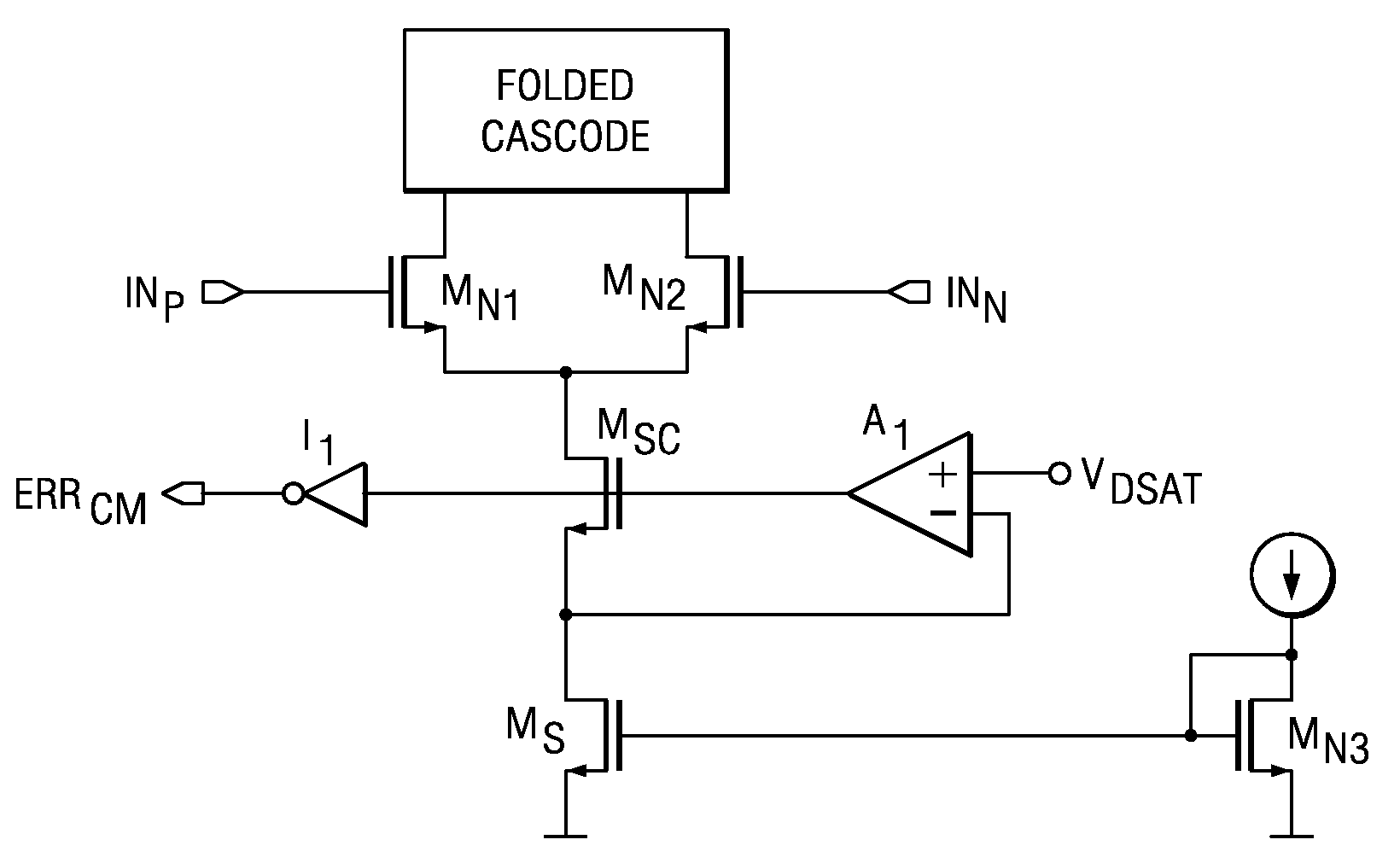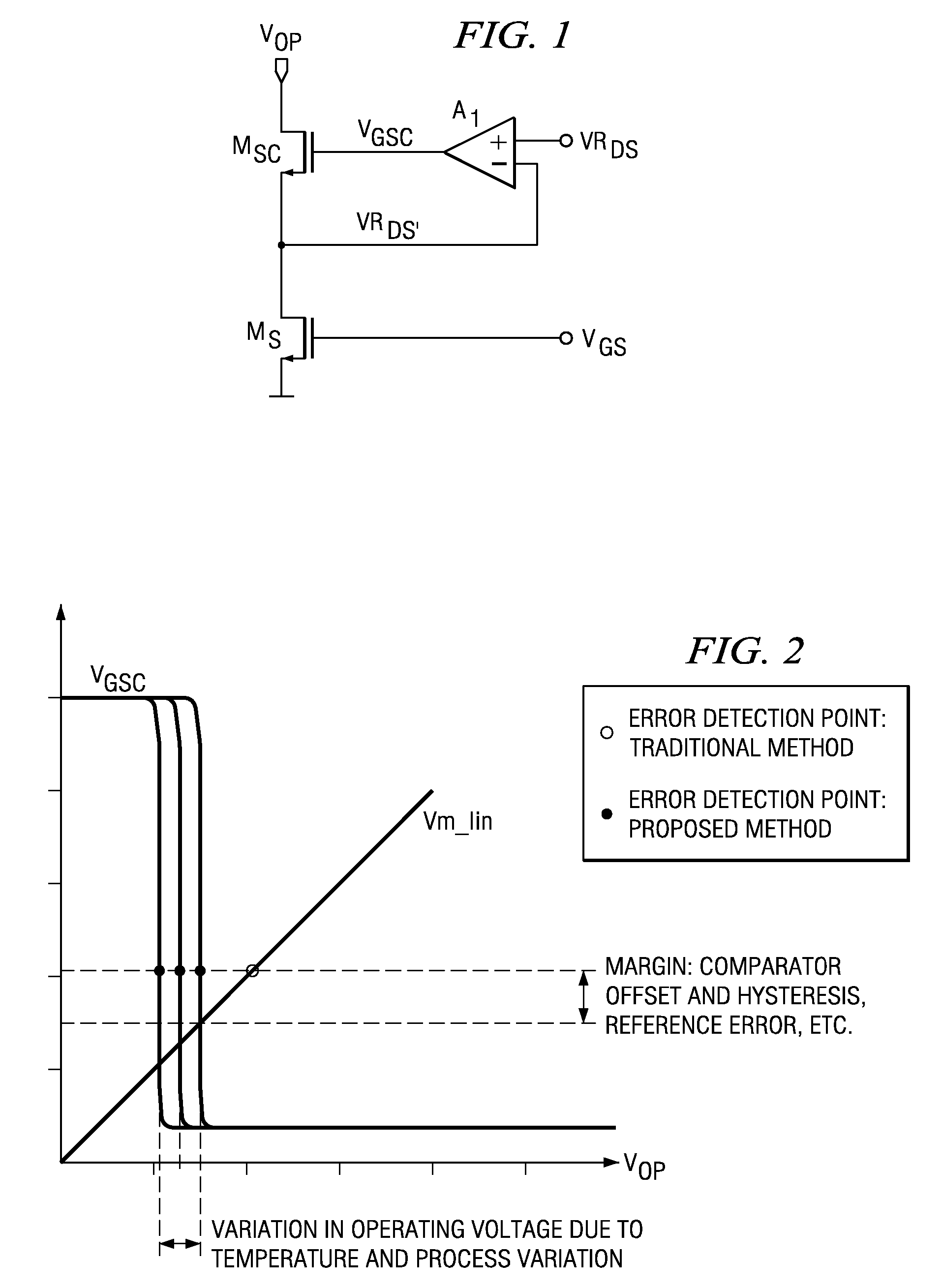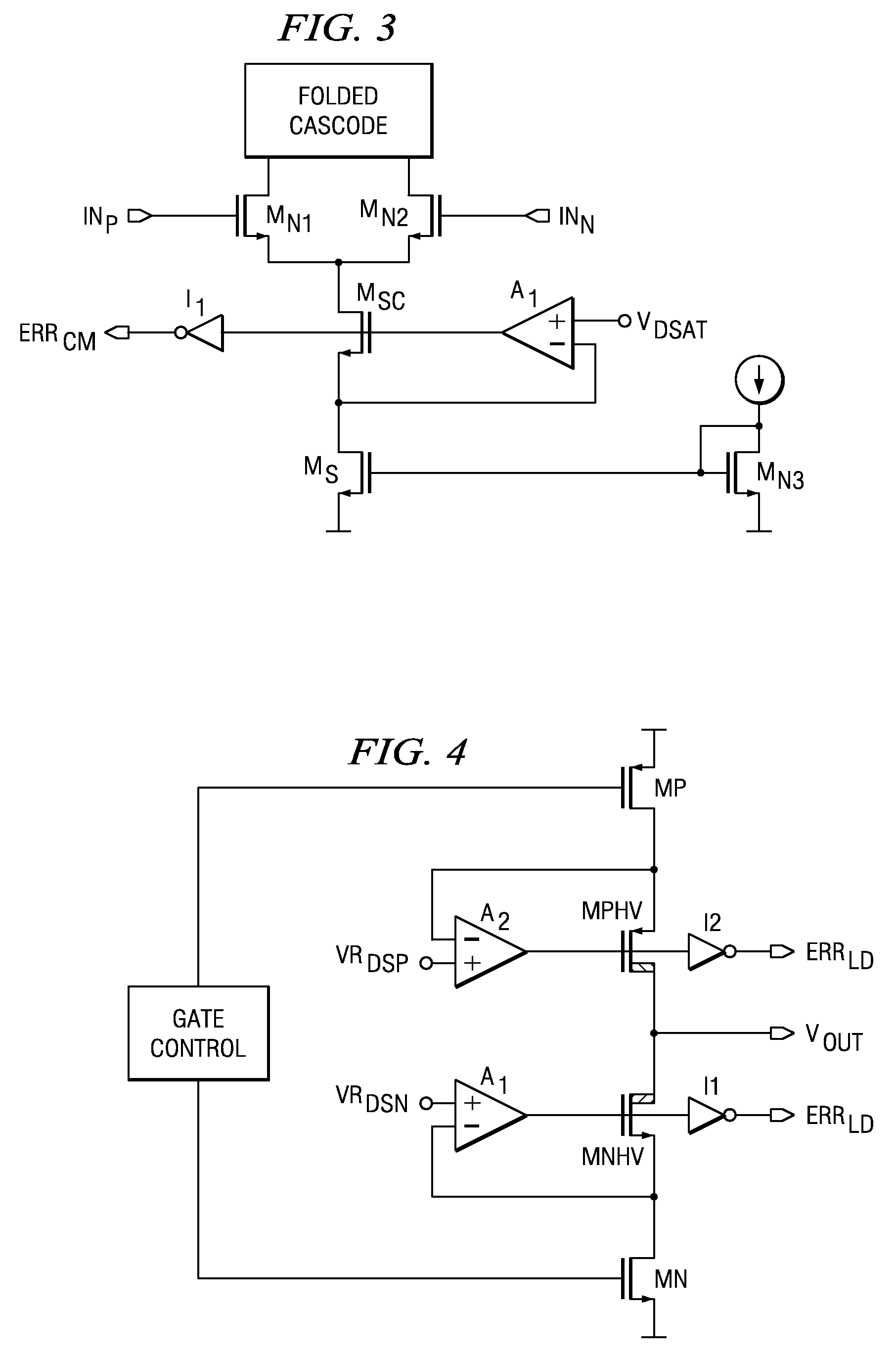Detecting amplifier out-of-range conditions
a technology of amplifiers and out-of-range conditions, applied in the direction of electric devices, instruments, transportation and packaging, etc., to achieve the effect of widening the useful operating range, accurately detecting the occurrence of steps, and extending the useful operating rang
- Summary
- Abstract
- Description
- Claims
- Application Information
AI Technical Summary
Benefits of technology
Problems solved by technology
Method used
Image
Examples
Embodiment Construction
[0012]The impedance enhancement circuit in FIG. 1 is intended to maintain critical transistors in their optimally biased condition over various operating conditions (temperature, process variation, input and output voltage ranges, current range, etc.) and to improve the output impedance of current mirrors. The CMOS or BiCMOS circuit includes an n-channel control transistor MS connected in series with an n-channel cascode transistor MSC, and a differential amplifier A1. The differential amplifier A1 has an inverting input connected to the node between the control transistor and the cascode transistor, a non-inverting input connected to a reference voltage source VRDS and an output connected to the gate of the cascode transistor MSC. A control voltage VGS is applied to the gate of control transistor MS and the drain of cascode transistor MSC sinks an output current IOUT. A similar structure can be built with p-channel transistors, as current source rather than current sink.
[0013]The c...
PUM
 Login to View More
Login to View More Abstract
Description
Claims
Application Information
 Login to View More
Login to View More - R&D
- Intellectual Property
- Life Sciences
- Materials
- Tech Scout
- Unparalleled Data Quality
- Higher Quality Content
- 60% Fewer Hallucinations
Browse by: Latest US Patents, China's latest patents, Technical Efficacy Thesaurus, Application Domain, Technology Topic, Popular Technical Reports.
© 2025 PatSnap. All rights reserved.Legal|Privacy policy|Modern Slavery Act Transparency Statement|Sitemap|About US| Contact US: help@patsnap.com



